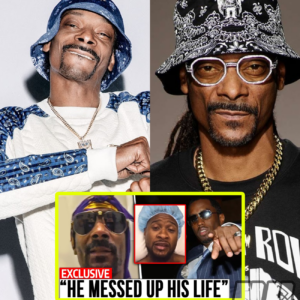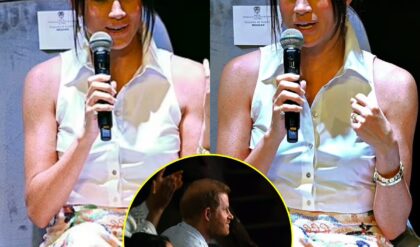Tesla Takes a Hit: Luciana Presta’s Misinformation and the Viral Brad Pitt Fender Bender Story
In today’s fast-paced digital age, the spread of misinformation can occur at the speed of a click. This phenomenon was recently highlighted in an episode of James Stevenson’s popular series “Who’s Hating Hard on Tesla Today,” where he dissected a misleading news story about Brad Pitt’s 2018 fender bender involving a Tesla.
The piece, rehashed by reporter Luciana Presta, brings to light the often convoluted and sometimes deceptive nature of online journalism.
The Story Revisited
In February 2018, Brad Pitt was involved in a minor car accident in Los Angeles while driving a Tesla Model S. The incident was a simple fender bender with no injuries.
However, in a surprising turn, the story resurfaced six years later, on MSN, thanks to Luciana Presta, who portrayed it as breaking news. The headline, “Tesla Glitch Forces Brad Pitt to Ditch Electric Vehicle,” suggested a malfunction in the Tesla, which was not the case. This misleading narrative set the stage for a storm of online reactions and critiques.
James Stevenson’s Take
James Stevenson, known for his sharp critique of media bias against Tesla, quickly caught wind of the story. In his show, Stevenson emphasized the absurdity of Presta’s article. “Six years and three months ago, Brad Pitt got into the accident pictured below,” he explained, showing the original images from 2018.
He pointed out that the headline implied a recent event caused by a Tesla malfunction, whereas the truth was far less sensational.
Stevenson highlighted two possible scenarios: either Presta was unaware that the accident occurred over six years ago, or she knowingly republished the old news to generate clicks.
Given the prominence of the story and the use of the same photos from 2018, Stevenson leaned towards the latter, suggesting a deliberate attempt to mislead readers.
The Role of Clickbait Journalism
The incident underscores a broader issue in modern journalism: the use of clickbait to drive traffic. By sensationalizing headlines and repurposing old news, media outlets can attract more viewers and generate ad revenue. This practice, however, often comes at the expense of accuracy and integrity.
In this case, a minor accident from years ago was rebranded as a current event involving a supposed Tesla glitch, playing into ongoing controversies surrounding Tesla’s autopilot and full self-driving (FSD) capabilities.
The Tesla Community Responds
The rehashed story quickly caught the attention of the Tesla community and its critics, often referred to as “Tesla Q.” These detractors have long been skeptical of Tesla’s technology and business practices. Some members, like Norman Bates, seized the opportunity to criticize Tesla, mistakenly attributing the 2018 accident to a fault in the FSD system, which wasn’t even available in beta at the time.
Stevenson noted the irony in these critiques, pointing out that Tesla owners in 2018 had only basic autopilot functions, not the advanced FSD features. He mocked the overblown reactions by Tesla Q members, who saw the old incident as evidence of a systemic issue with Tesla vehicles. “Any car can rear-end another car,” Stevenson stated, emphasizing the normalcy of such accidents regardless of the vehicle’s make or model.
Luciana Presta’s Misstep
Luciana Presta, the reporter behind the controversial article, found herself at the center of a media frenzy. While it’s unclear whether Presta knowingly misled readers, her failure to provide context and accurate information sparked widespread criticism. Stevenson humorously speculated on her motivations, questioning whether she worked directly for MSN or was a freelance journalist seeking viral content.
Presta’s article exemplifies the challenges faced by journalists in maintaining credibility in an era where sensationalism often trumps factual reporting. Her decision to recycle an old story without proper verification or context highlights the need for greater accountability and journalistic integrity.
Broader Implications for Tesla
For Tesla, incidents like this reflect the broader scrutiny and skepticism the company faces. As a leader in the electric vehicle market, Tesla is frequently subjected to both praise and criticism. The resurfacing of Brad Pitt’s minor accident, mischaracterized as a Tesla malfunction, illustrates how misinformation can influence public perception and fuel ongoing debates about the safety and reliability of electric vehicles.
Stevenson’s analysis of the situation underscores the importance of critical media literacy. In an age where misinformation can spread rapidly, consumers must be vigilant in discerning fact from fiction. His dissection of the Presta article serves as a reminder to question sensational headlines and seek out reliable sources.
Conclusion
James Stevenson’s episode on Luciana Presta’s misleading article about Brad Pitt’s Tesla fender bender is a poignant reminder of the complexities and pitfalls of modern journalism. As clickbait and sensationalism become increasingly prevalent, the need for accurate, context-rich reporting is more crucial than ever.
The Tesla community’s reaction and Stevenson’s critique highlight the importance of media literacy in navigating an information-saturated world. As Tesla continues to innovate and lead the electric vehicle market, the scrutiny it faces will undoubtedly persist, making the role of responsible journalism all the more significant.
News
(VIDEO) Celebs that P Diddy EXPLOITED for Cash
P Diddy and the Dark Side of the Entertainment Industry The entertainment industry is no stranger to scandal and controversy, but the recent revelations surrounding P Diddy (Sean Combs) have brought to light a web of disturbing allegations and connections…
(VIDEO) Kevin Hart IN TEARS After New Leaks EXPOSE Him At Diddy’s After Parties!!
Kevin Hart: A Complex Journey Through Fame, Scandal, and Personal Growth Kevin Hart, the renowned comedian and actor, has led a life marked by both incredible professional success and deeply personal scandals. His journey from selling sneakers to becoming one…
(VIDEO) “He Ruined My Life” Former Diddy Employees TEAM UP To EXPOSE Him!
The Dark Side of Fame: Allegations Against Diddy and the Revelations from Former Employees The music industry is often glamorized for its glitz and glamour, but behind the scenes, it can harbor dark secrets and troubling behavior. Recently, Sean “Diddy”…
(VIDEO) “He’s Why Justin Bieber Is DEPRESSED!” Undercover FBI Agent EXPOSES Diddy
The Tumultuous History of Snoop Dogg, P. Diddy, and the East Coast-West Coast Rivalry Hip-hop history is fraught with feuds, friendships, and ever-changing alliances. Central to many of these stories are iconic figures such as Snoop Dogg and P. Diddy…
(VIDEO) “Diddy Did Usher Dirty Forever” Snoop Dogg EXPOSES Sean Combs!
The Tumultuous History of Snoop Dogg, P. Diddy, and the East Coast-West Coast Rivalry Hip-hop history is fraught with feuds, friendships, and ever-changing alliances. Central to many of these stories are iconic figures such as Snoop Dogg and P. Diddy…
(VIDEO) Undercover CIA Agent EXPOSES Diddy & Jay Z!
The Fall of P. Diddy: A Dismantling of Credibility and the Unfolding Legal Crisis Introduction In recent years, Sean “P. Diddy” Combs has found himself at the epicenter of numerous controversies and legal battles that have significantly tarnished his once-polished…
End of content
No more pages to load











